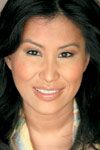- Acne
- Actinic Keratosis
- Aesthetics
- Alopecia
- Atopic Dermatitis
- Buy-and-Bill
- COVID-19
- Case-Based Roundtable
- Chronic Hand Eczema
- Drug Watch
- Eczema
- General Dermatology
- Hidradenitis Suppurativa
- Melasma
- NP and PA
- Pediatric Dermatology
- Pigmentary Disorders
- Practice Management
- Precision Medicine and Biologics
- Prurigo Nodularis
- Psoriasis
- Psoriatic Arthritis
- Rare Disease
- Rosacea
- Skin Cancer
- Vitiligo
- Wound Care
Article
Treating Asian skin: Fast-growing population requires delicate treatment
Although Asians are the fastest-growing population group in the United States, most dermatologists are not familiar with differences in the skin of Asians as compared to Caucasian patients. Signs of aging are different, and more delicate treatment is needed for sensitive Asian skin.

Key Points

Dermatologists in those areas have a better chance of seeing a significant number of Asian patients in their practices, yet, according to Jessica Wu, M.D., a Los Angeles dermatologist with a special interest in Asian skin, the differences between Asian and Caucasian skin are not truly common knowledge.

"Additionally, Asian skin has been shown to have denser mid-facial fat, with increased attachments between the SMAS, the superficial muscular aponeurotic system, and the deeper muscles," Dr. Wu tells Dermatology Times.
That denser structure beneath the skin, Dr. Wu says, is relevant for dermatologists who do cosmetic procedures on Asian patients, because different fillers are needed when treating aging conditions, such as a deep nasolabial fold. She prefers either Juvéderm Ultra Plus (hyaluronic acid [HA], Allergan) or Perlane (HA, Medicis), administered with a 27-gauge needle.
Melasma
Asian patients show different early signs of aging than their Caucasian counterparts.
"Whereas Caucasians may start developing fine lines and wrinkles around 40 years of age, Asians may not wrinkle, but melasma may start developing in that same time frame," she says.
Dr. Wu prefers TCA peels - 20 percent to 35 percent TCA - for treating her Asian patients' melasma.
"The results are good, and more predictable for melasma in Asian patients than IPL is," she says.
Dr. Wu will not do either peels or IPL unless her patients are committed to a home skincare routine consisting of daily UVA/UVB sunscreen protection as well as a hydroquinoine/Retin-A product used at least a couple nights a week.
ABNOM
Another condition unique to Asian skin is acquired bilateral nevus of Ota-like macules (ABNOM).
"They kind of look like freckles across the cheeks, but are deeper components of the pigmentation and are often resistant to fading cream and the more superficial treatments," Dr. Wu says.
Not all patients want to treat the condition. Dr. Wu says that sometimes patients are simply alarmed, because the ABNOM doesn't generally appear until a person is in their 30s or 40s, and they become concerned that the pigment changes are indicative of cancer.
"I present the option that it is possible to treat them if they want. The majority like to lighten them, but not everyone wants to get rid of them. Some people think they are cute. They can make the patient look a bit younger," Dr. Wu says.
Treatment consists of the daily routine of sunscreen and nightly fading cream use, alternated with laser and chemical peel.
Skin sensitivity
Although Asian skin is thicker than Caucasian skin, Dr. Wu says it can be more sensitive than Caucasian skin.
"That's why I need to introduce hydroquinone and Retin-A products more slowly in my Asian patients. I may recommend TriLuma (Galderma), a compounded hydroquinone/tretinoin formulation, or Retin-A alone, but I will only have them use the medication twice a week to begin with.
"The problem is that if and when Asian skin does become irritated or inflamed, it is more likely to show post-inflammatory hyperpigmentation," Dr. Wu says.
According to Dr. Wu, very little information on Asian skin appears in English-language medical literature. Much of the knowledge she has acquired comes from Asian language research.
So, whenever possible, Dr. Wu actively seeks out Asian subjects when she conducts clinical trials and studies.










